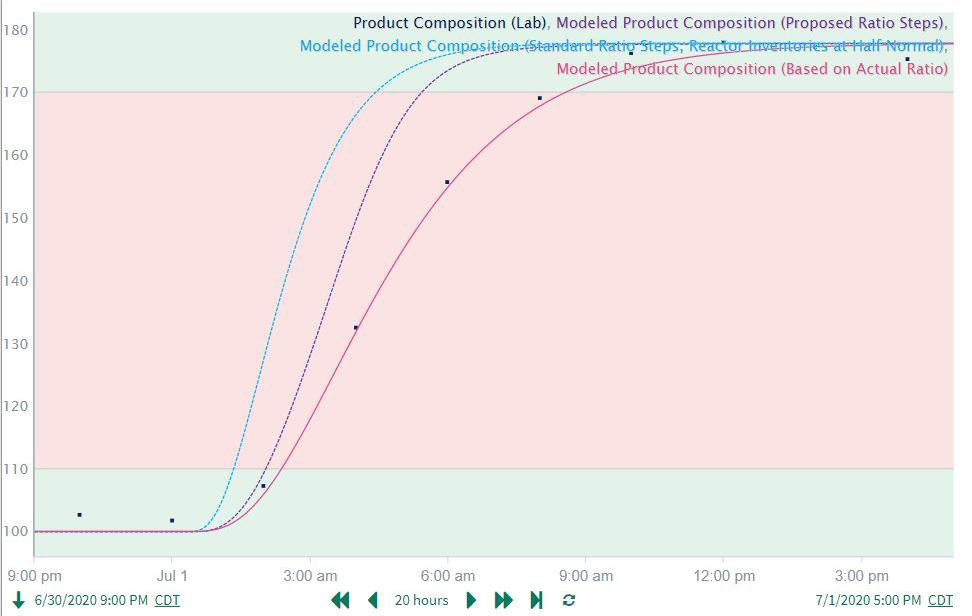
Dynamic Modeling for Process Monitoring and What-If Analyses
Challenge
Process knowledgeable engineers and operations personnel are aware of the prevalence of dynamic process responses in manufacturing. This is due to liquid volumes, piping, mechanical transport delays, and equipment design features.
Process control engineers typically own the dynamic response and modeling expertise thanks to their importance in control loop tuning, control strategy design, and advanced process control implementation.
Standard linear regression modeling often falls short due to time delays and time lags in these dynamic modeling situations. Additionally, these dynamic modeling capabilities are often siloed in specialized software offerings that are not intuitive or user-friendly, making general time series data analytics difficult.
Solution
Seeq Formula eliminates many of these challenges by bridging the dynamic modeling gap. These time delayed and time lagged calculation functions provide first order plus dead time as well as more complex dynamic models for both monitoring and prediction.
Results
Seeq’s data analytics environment combines steady-state based, standard predictive modeling with basic dynamic modeling capabilities. This environment enables new use cases and creates opportunities for additional analytics-generated value:
- Collaboration between process and control engineers
- Integrated dynamic modeling features within one comprehensive industrial data analytics application
- What-If Analyses incorporating dynamic modeling
- Near real-time monitoring informing process decisions
Reporting & Collaboration
Seeq Formula’s dynamic modeling and what-if analysis capabilities open up many applications appealing to process control engineers, process engineers, and operators.
For example, one application is calculating real-time product composition which can be monitored by operations and used for alarming via an auto-updating Organizer display in the control room.
The combination of data analytics with dynamic process control analyses in Seeq enables swift collaboration and use case development between process engineers and control engineers.
